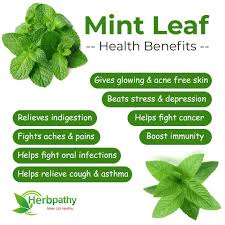
Caveman diets are a good option if you want to lose weight. This diet involves eating food that was available in prehistoric times. It usually excludes cooked food and has fewer carbohydrates. A caveman diet can help you lose body fat and provide balanced energy. The caveman diet is a great way to lose excess body fat while maintaining a balanced energy level. Read on for more details.
Caveman diet includes meat, fish and dairy products. These foods are considered healthy and part of a balanced diet by the MyPyramid (an updated version of the Food Guide Pyramid). Healthy adults should consume no more than three cups per day of low-fat dairy. The caveman diet also limits grains, although it's important to remember that whole grains are an essential part of a healthy diet. While this diet might sound good for an average person, pregnant women shouldn't eat it because of the potential for adverse effects on their baby's health.

A caveman diet is not for everyone, and it may not work for everyone. If you're new to the caveman diet, start slow and follow the guidelines during open meals. This will ensure that you adhere to the program and avoid binging. Accept that you may be tempted to cheat. Some people can't adhere to strict dietary rules for the first few day. You can try this method if you aren't sure. It will help you to lose weight.
Although some caveman diets discourage exercise, they encourage physical activity. Some cavemen recommend that you do no exercise, while others recommend going out and hunting and gathering. Given that the Paleolithic era was dominated by hunting and gathering food, it would have been difficult to sustain a life without a lot more physical activity. Therefore, grains are not allowed on a caveman diet.
Caveman diets are easy to follow and require less time. Caveman diets allow people to prepare large batches of soups and stews that can last several days. The caveman diet is similar in many ways to the ketogenic diet. However, there are some important differences. Except for the lower carbohydrate intake, caveman diet requirements are more restrictive than those of a ketogenic diet.

Cavemans have a higher level of activity. Caveman diets require more exercise, but also contain less processed food. The caveman's diet is more about the quantity of fat and protein than the type or meat. It also excludes milk and gluten. This is an ideal diet for people with diabetes, but it is not recommended for everyone. This type is recommended only for those who are just starting out.
FAQ
How Can I Get Hired As a Cook?
Through word-of-mouth, you can find a job to be a chef. A friend or family member might know of an open restaurant that is in desperate need of staff. Also, restaurants often advertise openings on bulletin boards and websites.
Who is the best path to a career in chef work? How can I start my career as a chef?
As an apprentice, you can start your journey to becoming a chef. Apprenticeships let you work for many years and pay no tuition fees. After your apprenticeship is completed, you can apply to be a sous chef. Sous chefs assist cooks with tasks such as making salads, and desserts. They also oversee the entire operation of the restaurant.
What does it take to become a chef in the United States? What's the average career path for a chef?
A chef's career takes about five years. This time you'll learn the basics of cooking and work as a cook assistant. After you've completed your training you can apply to be a line cook or sous chef. The average annual salary for a professional chef is between $25,000 and $60,000
How do I learn about cooking and baking?
There are many cooking classes available all over the country. Many schools offer courses in baking, pastry, and wine tasting. If you want to learn more about cooking, you can enroll in a class at a local community college or vocational school, or attend one offered by a private institution.
What's the difference between a professional chef and an amateur cook?
A chef prepares meals for others. A cook prepares food for himself or herself. Although both jobs require you to prepare food, a chef is more involved in serving customers. This means they may have to decide what to serve guests based on their preferences. The cook does not have to interact directly with customers. Instead, they ensure that the food tastes delicious before they serve it to others.
What is the best way to learn to cook?
Cooking is something that everyone should be able to do. Cooking is a skill that will allow you to enjoy delicious food. When learning how to cook, the first thing to do is find a recipe you love and follow it closely. The next step is to practice making small modifications to the recipe until it becomes second nature. You can also try cooking for other people. This will allow you to improve your cooking skills and test your abilities.
Statistics
- According to the BLS, chefs earn $58,740 a year. (learnhowtobecome.org)
- In the United States, the category is estimated at $23.2 billion annually and is growing faster than the market. (washingtonpost.com)
- You'll be amazed that over 90% of CIA students receive scholarships and grants to finish their culinary studies. (ischoolconnect.com)
External Links
How To
How to make a perfect omelet
Omelets are my favorite breakfast dish. How do you make them perfect? Many different recipes and methods have failed to work for me. Today, I'd like to share some tips with you in order to make delicious and fluffy omelets every day.
It is important to know that eggs can be temperamental when making omelets. They must be fresh, preferably from the organic market, and be kept cold until cooking. If you don't keep them cold enough, the whites won't form properly, and the yolks will break down too much and become runny. This makes your omelets look weirdly colored. If you intend to cook your eggs immediately, it's best to use room-temperature egg.
Another tip is to separate your egg before adding it into the pan. You don't want any white to get mixed up with the yolk because this could cause the omelet to curdle.
The bottom part of an egg that is added directly to the stovetop might be burned, which could cause a ruined texture in your omelet. Instead, microwave the egg for 10 seconds before adding it to the pan. The microwave heat cooks the eggs just right without overcooking them.
Next, let's talk about mixing the eggs. When mixing eggs, it is important to thoroughly beat them. You can do this by turning the bowl of your mixer upside down. Then, vigorously shake the bowl. The egg will be thoroughly mixed in the bowl as the air is whipped.
Now comes the fun part - pouring the milk into the mixture. Pour half the milk into the beaten egg mixture and then fold in the eggs. Don't worry if there are still streaks of egg visible; these streaks will disappear once you flip the omelet.
After you have folded the eggs, heat the oil in a pan over medium heat. Once the oil has started to sizzle, turn the heat down to low. Once the oil has gotten hot, add 1/4 cup of butter and swirl it around so that the entire pan is coated. Carefully open the pan's lid and add salt to the pan. A pinch of salt will help prevent the omelet from sticking to the pan.
Once the omelet has formed, cover the pan again and wait for the top side to set completely. Flip the omelet with a spatula, or flip it upside down. Cook the other half for another minute. Take the omelet out of the pan and immediately serve.
This recipe works best using whole milk. Skimmed milk is also possible.